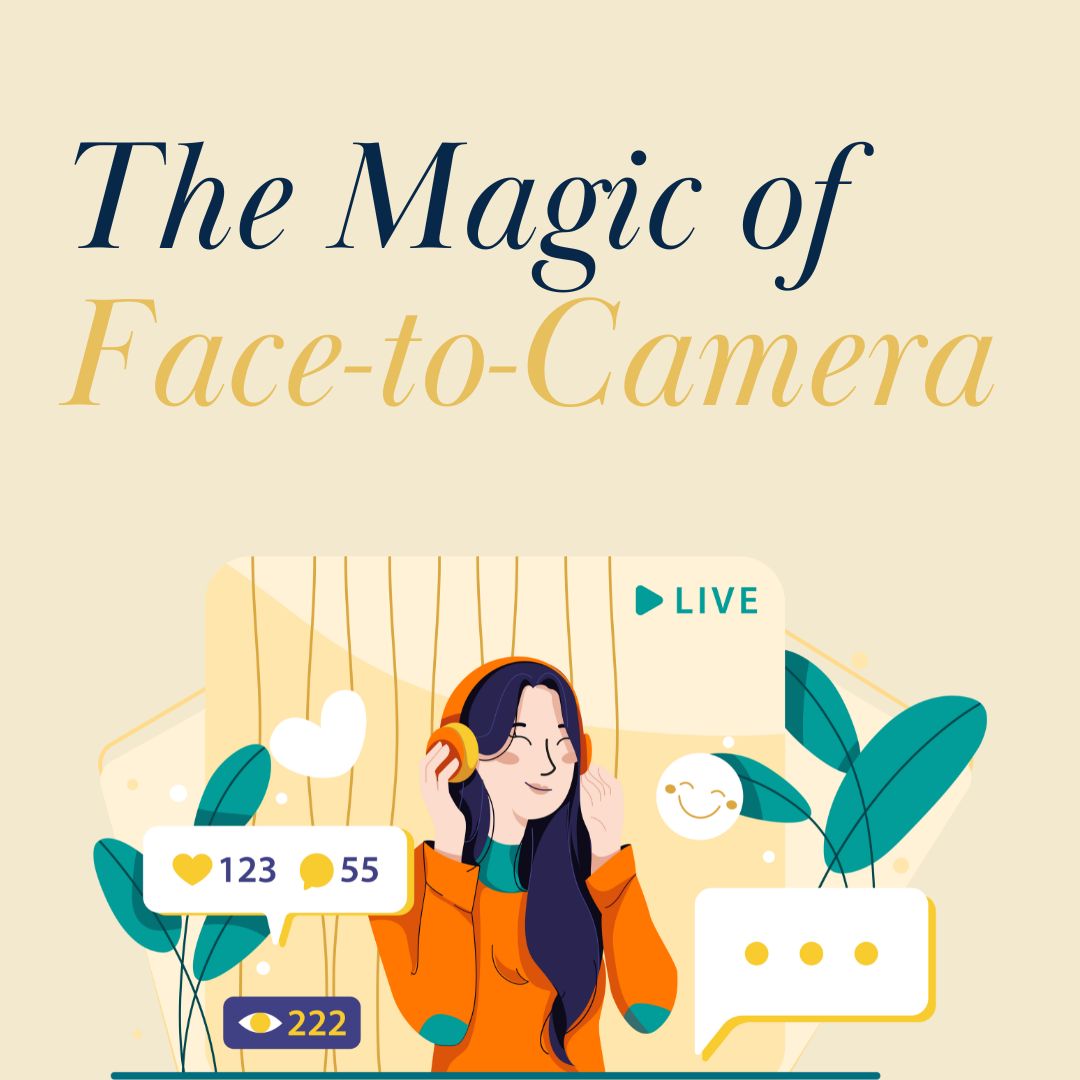One of my absolute favorite social media strategies for clients is having them go face-to-camera for a brief period of time (usually around or under thirty seconds). Here are two reasons why I love it:
- Video gives an obvious boost in visibility and engagement.
- Face-to-face communication (which face-to-camera videos simulate) builds trust with your audience, which is incredibly important on social media.
Here’s a five steps and seven tips to make a good face-to-camera video:
- Decide on a spokesperson. Maybe it’s your CEO, someone from your Board of Directors, or a happy customer. Remember, this person is building trust. Choose based on credentials or social proof, but since this person is building trust, you probably shouldn’t choose the head of sales as that could come off as inauthentic (though that person would be great at finding the ideal spokesperson).
- Avoid a script. As mentioned, this video is going to be short. Thirty seconds is only enough time to hit on one or two points, which are easy to remember, and working from memory versus a script or teleprompter sounds (and looks) more natural and friendly. If your spokesperson doesn’t feel comfortable with that, is there another similar spokesperson who does? (Note: If you are the uncomfortable spokesperson, the only way around this is practicing until you don’t care anymore. I promise, it works).
- Set up your video for success. Face-to-camera videos are simple, but not quite as simple as setting your phone to video on selfie mode and getting started. To amplify quality in a big way, take these seven, simple sub steps:
- Face a window or the sun.
- Don’t squint. If you’ find you’re squinting, move thirty degrees to the right or left of the sun.
- Look behind you. Are there dirty socks on the ground? Your backdrop doesn’t have to be perfect, but make sure it’s tidy. Tip: plain fences or walls make great backdrops.
- Listen up. Are there noises outside or in the office? Wait for them to pass before you start your video. For extra clarity, plug in your headphones.
- Stay still. Have your spokesperson sit down in a chair that doesn’t have wheels (if possible). People tend to move in nervous ways on video. Sitting reduces that. If you are videoing yourself, sit at a table so that you can put your elbow down and cradle your phone in one hand. Then, start the video with the other hand. I have a tripod but purposefully took my video this way to show you that you do not need to have fancy equipment to do these types of videos.
- Accept mistakes. I paused in the middle of the video I made for this blog. I also let my hand show in the frame when I turned it on and off. Maybe you noticed, maybe you didn’t. But remember, reality TV doesn’t appeal to audiences because it was perfect. It appeals to audiences it’s real and relatable. Don’t sweat the small stuff. In fact, if you take too much of it out you will appear less likeable anyway. Humans trust other humans more than robots.
- Speak slow and soft. I’m a fast talker. When I’m on video, I remind myself to speak slower than usual. It feels unnatural to me but sounds normal to others. This is an area where practice really pays off. Also, make sure that you speak in a normal, soft voice like you would if you were carrying on a conversation in a quiet room. Some people have a tendency to speak loudly when the camera goes on, which brings most people’s voice to a higher pitch. High pitched voices are annoying. They remind us of people yelling at us to do the dishes. When you speak at a normal volume, your voice naturally drops (and your listeners will appreciate it).
- Look at the camera. Most people look at their reflections when they take videos on selfie mode, but you should try to avoid that because you want it to look like you’re making eye contact with your listeners. This means you need to look into the camera at the top of your screen. If you are recording a spokesperson, make sure they are looking directly into the camera lens to sharpen the eye contact.
- Keep editing to a minimum. I recommend leaving slight imperfections in the video, because again, humans relate to humans, not robots. However, if there is a long space between when you start the video and when the subject starts talking, it might be a good place to make a cut with something like iMovie or in-app social editing software. Same idea applies for the ending. Adding subtitles is also not a bad idea, since there’s a ~85% chance that your video will be viewed on silent.
- Reality check yourself to get rid of nerves. People need to see a brand 12-20 times (sometimes more) before they are truly conscious of it. The truth is, most people won’t notice video. If you or your spokesperson is nervous, try to reframe your thinking with that fact. I get so sad when I see people give up on going face-to-camera because of discomfort or nerves. After all, if someone does notice your pause or “um”s, thank them. It’s tough to get noticed out there and they are now a warm lead and aware of your brand. Success!
I love what I do because I get to be behind the camera a lot and help others promote themselves. I, too, don’t love the feeling of putting my face on film. But for this, I jumped in front because I am a firm believer in doing what I tell you to do. Will you or a spokesperson take your turn now?











